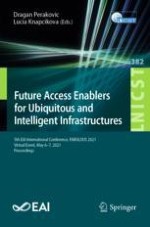2021 | Buch
Future Access Enablers for Ubiquitous and Intelligent Infrastructures
5th EAI International Conference, FABULOUS 2021, Virtual Event, May 6–7, 2021, Proceedings
herausgegeben von: Dragan Perakovic, Dr. Lucia Knapcikova
Verlag: Springer International Publishing
Buchreihe : Lecture Notes of the Institute for Computer Sciences, Social Informatics and Telecommunications Engineering
